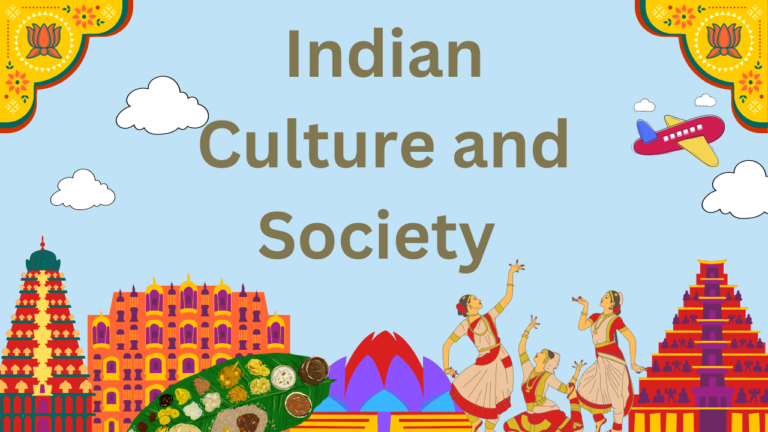Maharashtra
Today, let’s explore a state on India’s western coast, Maharashtra, whose culture is as colorful as its name suggests! From the Indus Valley Civilization to the Maratha Empire, its history is illustrious. Marathi, the language here, captivates with its sweet melodies. The cuisine is an explosion of flavors that can leave your taste buds tingling! So, let’s embark on a journey today and uncover the essence of Maharashtra.
Establishment of Maharashtra:
Maharashtra has a rich and ancient history. Traces of the Indus Valley Civilization suggest its connection to that era. Dynasties like Satavahanas, Rashtrakutas, and Chalukyas ruled here, fostering art, literature, and architecture. The Ajanta and Ellora caves from the medieval period are still revered as global heritage sites.
In the 17th century, Shivaji Maharaj laid the foundation of the Maratha Empire, playing a significant role in India’s history. His descendants left an indelible mark for a hundred years.
Even under British rule in the 19th century, Maharashtra’s cultural heritage thrived. Many heroes were born during the independence movement, such as Ganesha Vasudev Joshi, Savitribai Phule, Mahatma Jyotiba Phule, among others.
Maharashtra officially became a state on May 1, 1960, as part of India’s linguistic reorganization. Before this, the region was under four different administrations:
- Bombay Presidency
- Barar Province
- Madras Presidency
- Hyderabad State
The demand for Maharashtra arose primarily because Marathi-speaking people were more numerous in these administrations. Thus, considering this demand, the Indian government formed the States Reorganization Commission in 1956. Based on the Commission’s recommendations, Bombay Presidency and Barar Province merged to form Maharashtra State on May 1, 1960.
Traditional Attire of Maharashtra:
Maharashtra’s traditional attire is a beautiful blend of simplicity and vibrant colors. For women, the ‘Nauvari Saree,’ a nine-yard saree, symbolizes beauty and grace. Attires like the ‘Kurta,’ ‘Payjeb,’ ‘Jhumkas,’ ‘Nath,’ and ‘Gajra’ complete the adornment of Marathi women. For men, the ‘Dhoti-Kurta’ is the traditional clothing. Turbans (‘Pagdi’), ‘Feta,’ and ‘Dupatta’ are also worn on special occasions. Even in modern times, traditional attire holds significance.
Distinctive Maharashtrian Cuisine:
Maharashtra’s cuisine is as diverse as its geography! The beautiful blend of spices, tangy flavors, and local essence defines its food culture. Dishes like ‘Misal Pav,’ ‘Varan Bhaat,’ ‘Kolhapuri Mutton,’ ‘Paneer Kolhapuri,’ ‘Shev Bhaji,’ ‘Pitla,’ and ‘Vada Pav’ represent different flavors in every bite. In desserts too, there’s a variety – ‘Puran Poli,’ ‘Gulachi Kheer,’ ‘Karanji,’ ‘Mohan Da Kaja,’ ‘Parsi,’ ‘Son Papdi,’ to name a few. Additionally, in Vidarbha, dishes like ‘Rodga’ and ‘Bitta’ are prepared by roasting and frying, adding to Maharashtra’s culinary diversity. Perhaps, the love for food in Maharashtra surpasses everything else!
Pilgrimage Sites in Maharashtra:
Maharashtra is a religiously rich state with many significant pilgrimage sites for Hindus, Jains, and Buddhists, often visited by devotees for darshan (sight) and puja (worship).
Pandharpur:
Location: Located in the Solapur district of Maharashtra. Pandharpur is the sacred abode of Vithoba, considered significant in Hinduism. Vithoba’s temple attracts thousands of devotees, especially during the ‘Vari.’
Tuljapur:
Location: Situated in the Osmanabad district of Maharashtra.Tuljapur houses the temple of Goddess Bhavani, renowned for her sacred presence. This place is considered an incarnation of Goddess Narayani as per Narayani Purana.
Bhimashankar:
Location: Situated in the Pune district of Maharashtra.Bhimashankar is the place of Bhimashankar Jyotirlinga, renowned as an ancient Shiva temple. Its natural beauty and spiritual aura attract pilgrims.
Grishneshwar:
Location: Located in the Aurangabad district of Maharashtra. Grishneshwar Jyotirlinga is considered a prominent Shiva temple. It is still a significant center for religious rituals and worship.
Tulshibaug:
Location: Situated in the Osmanabad district of Maharashtra. Tulshibaug is specially built with the support of Queen Tulshibai of Pandarpur and is a prominent pilgrimage center attracting devotees and seekers.
Shirdi:
Location: Located in the Ahmednagar district of Maharashtra. Specialty: Shirdi is famous for the temple of Shri Sai Baba, known worldwide for his grace and blessings. The number of devotees visiting here increases every year, making Shirdi a significant hub for religious tourism.
Kolhapur:
Mahalakshmi Temple: The Mahalakshmi Temple in Mumbai is a famous Hindu temple. It is known for its golden coverings and attractive architecture.
Mumbai:
Siddhivinayak Temple: The Siddhivinayak Temple in Mumbai is a prominent Ganesh temple known for its massive size and grand architecture.
Nashik:
Tryambakeshwar is a sacred Hindu pilgrimage site located in the Nasik district of Maharashtra. This temple is dedicated to Lord Shiva and is one of the twelve Jyotirlingas.
Shegaon:
Gajanan Maharaj Temple: This temple is the city’s most famous attraction. The temple is the resting place of Gajanan Maharaj.
Conclusion:
Maharashtra, with its rich history, vibrant culture, diverse cuisine, and significant pilgrimage sites, encapsulates a unique essence that embodies the spirit of India’s cultural diversity and heritage.



